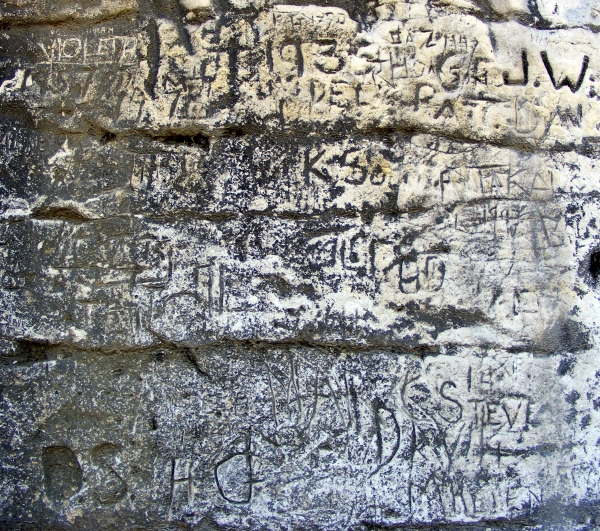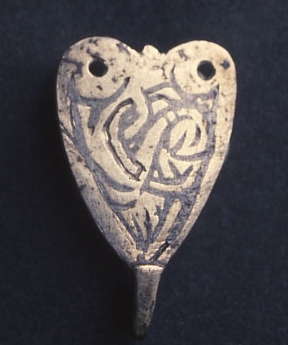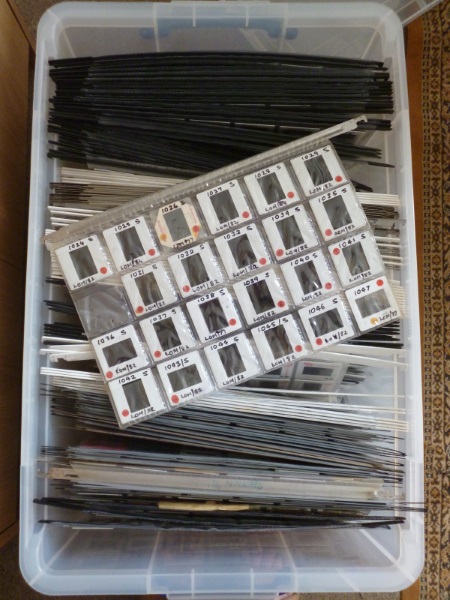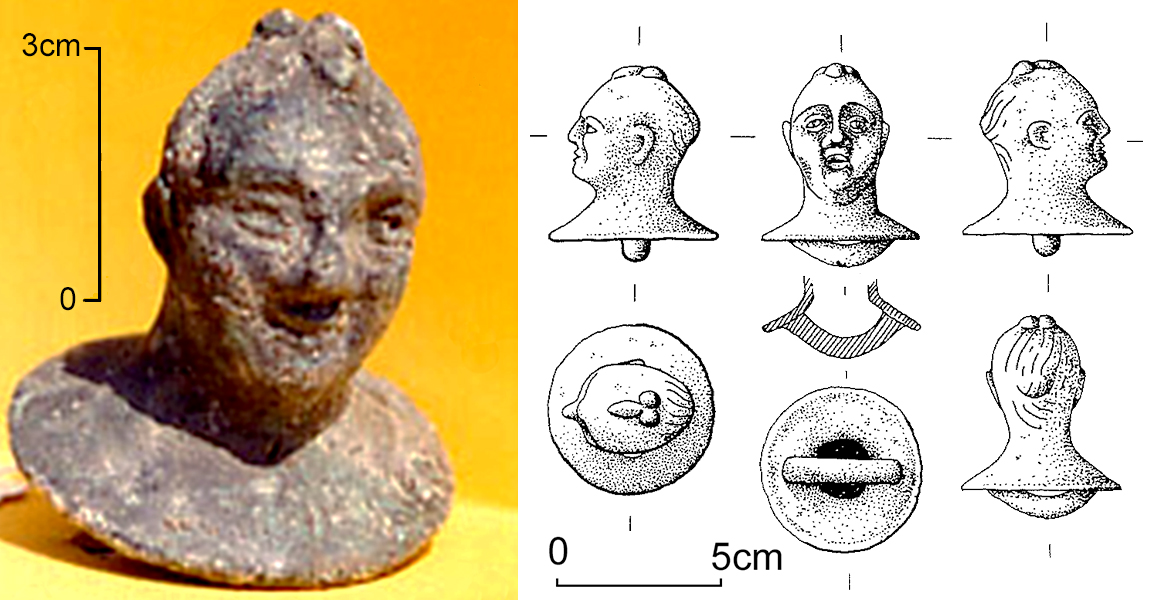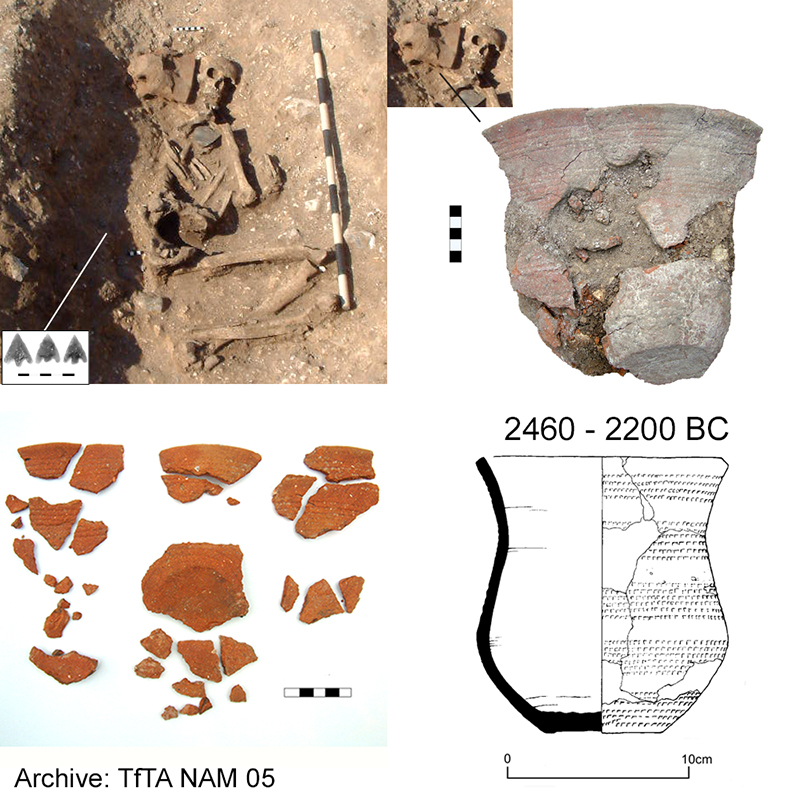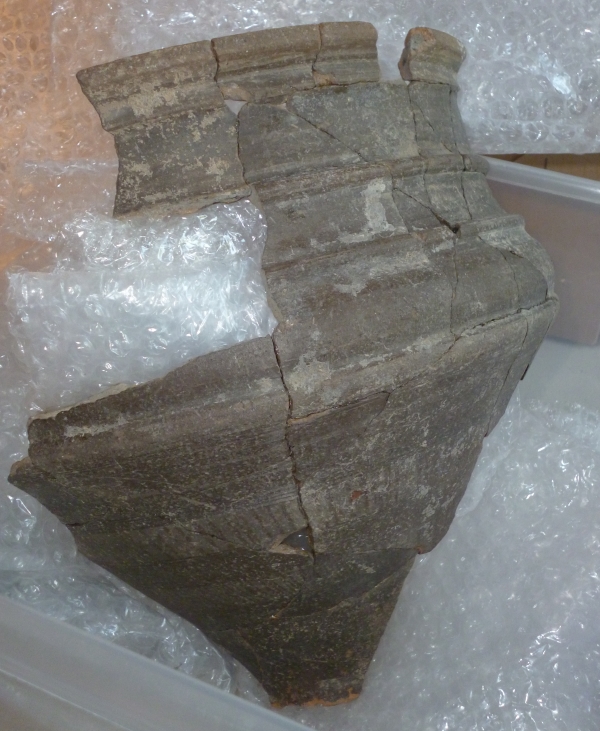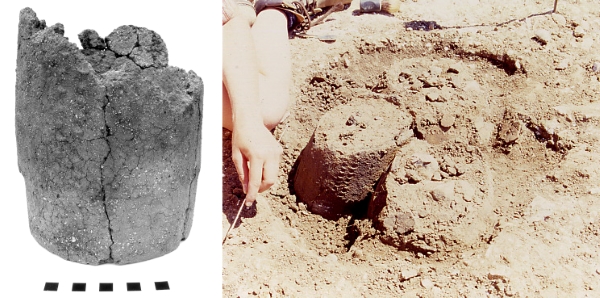
A small ring ditch cut into geological deposits was exposed in an excavation on the Westcliff at Ramsgate, carried out in 2002 on the site of a new housing development. Irregular flint nodules spread over the area of the ditch and retained in the soil that filled it suggested it may have been covered by a cairn.
Pieces of a coarse flint tempered vessel found at the base of the ditch, linked the date of the ring ditch with that of a group of five truncated pits that were nearby. Each pit contained between one and three coarse flint tempered ‘Deverel-Rimbury’ style pottery vessels, all but one inverted so that they stood with their rims on the base of the pit. The bases of the vessels, which had been uppermost in the pits, had been disturbed and destroyed at some later time.
Fragments of burnt human bone were distributed irregularly within the soil that filled each vessel. The burnt bone seems to represent material that had been collected from cremation pyres and placed in the vessels, rather than all that remained of the cremation of a single individual.
Today’s picture shows one of the pits (Pit A) being excavated, alongside a photograph of the best preserved Vessel 4, a straight sided, narrow mouthed bucket urn in a coarse flint tempered fabric, decorated down each side with two rows of finger tip impressions. The urn is inverted and stands on its rim as it did in the cremation pit.
All three vessels from Pit A contained cremated bone fragments, two with identifiable bone elements representing two individuals, a child around 10 years of age and an adult. Radiocarbon dating of a fragment of bone from one of the individuals gave a date between 1520-1310 BC, within the Middle Bronze Age.
There’s more about the Middle Bronze Age in Thanet in the Virtual Museum’s Bronze Age gallery.
You can find out more about this site in the published report:
Moody, G., Macpherson-Grant, N. and Anderson, T. 2010. Later Bronze Age Cremation at West Cliff, Ramsgate. Archaeologia Cantiana CXXX 147-172.
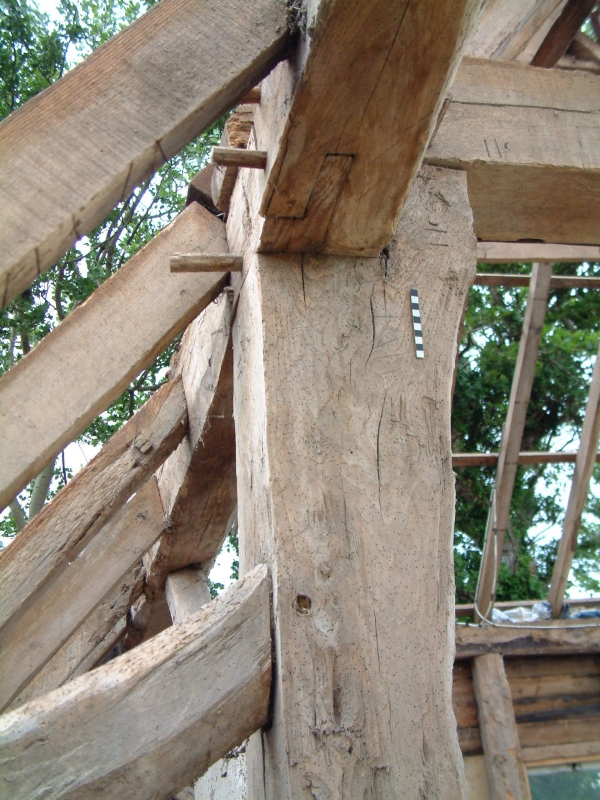
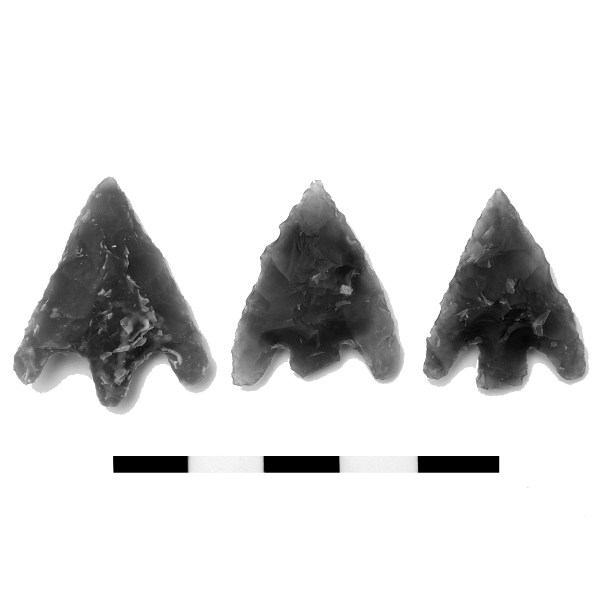
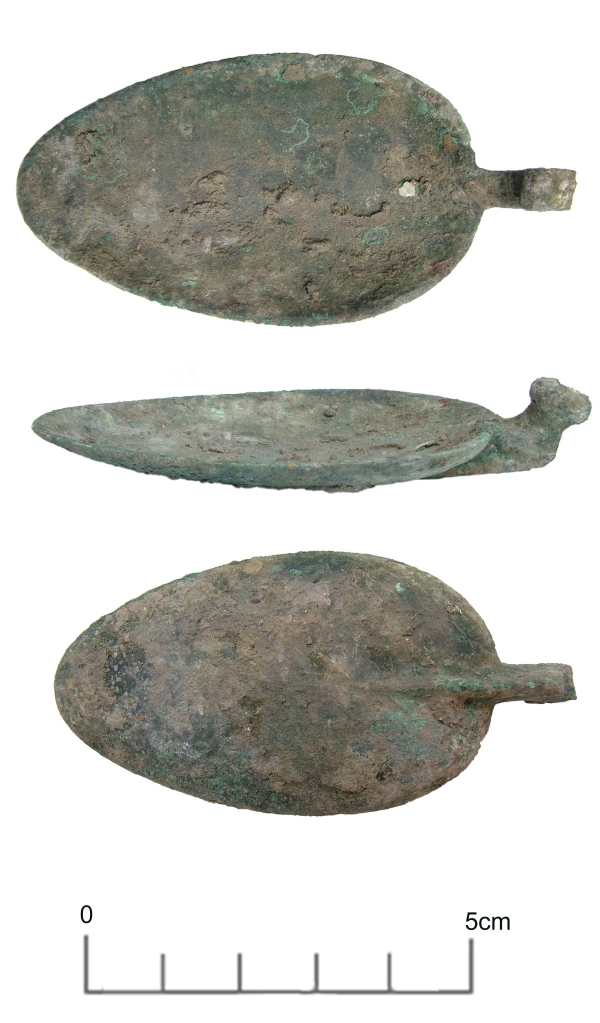 Just how old are spoons? A spoon (apart from a knife) is probably the oldest utensil known to man, being used to scoop up food to eat and for mixing and measuring. The oldest spoons were probably just scoops made from shells, later developing into purpose made scoops with handles and made from wood and bone. Some of the earliest known spoons with handles dating from around 1300 BC have been found in ancient Egyptian tombs and are carved from ebony and ivory.
Just how old are spoons? A spoon (apart from a knife) is probably the oldest utensil known to man, being used to scoop up food to eat and for mixing and measuring. The oldest spoons were probably just scoops made from shells, later developing into purpose made scoops with handles and made from wood and bone. Some of the earliest known spoons with handles dating from around 1300 BC have been found in ancient Egyptian tombs and are carved from ebony and ivory.